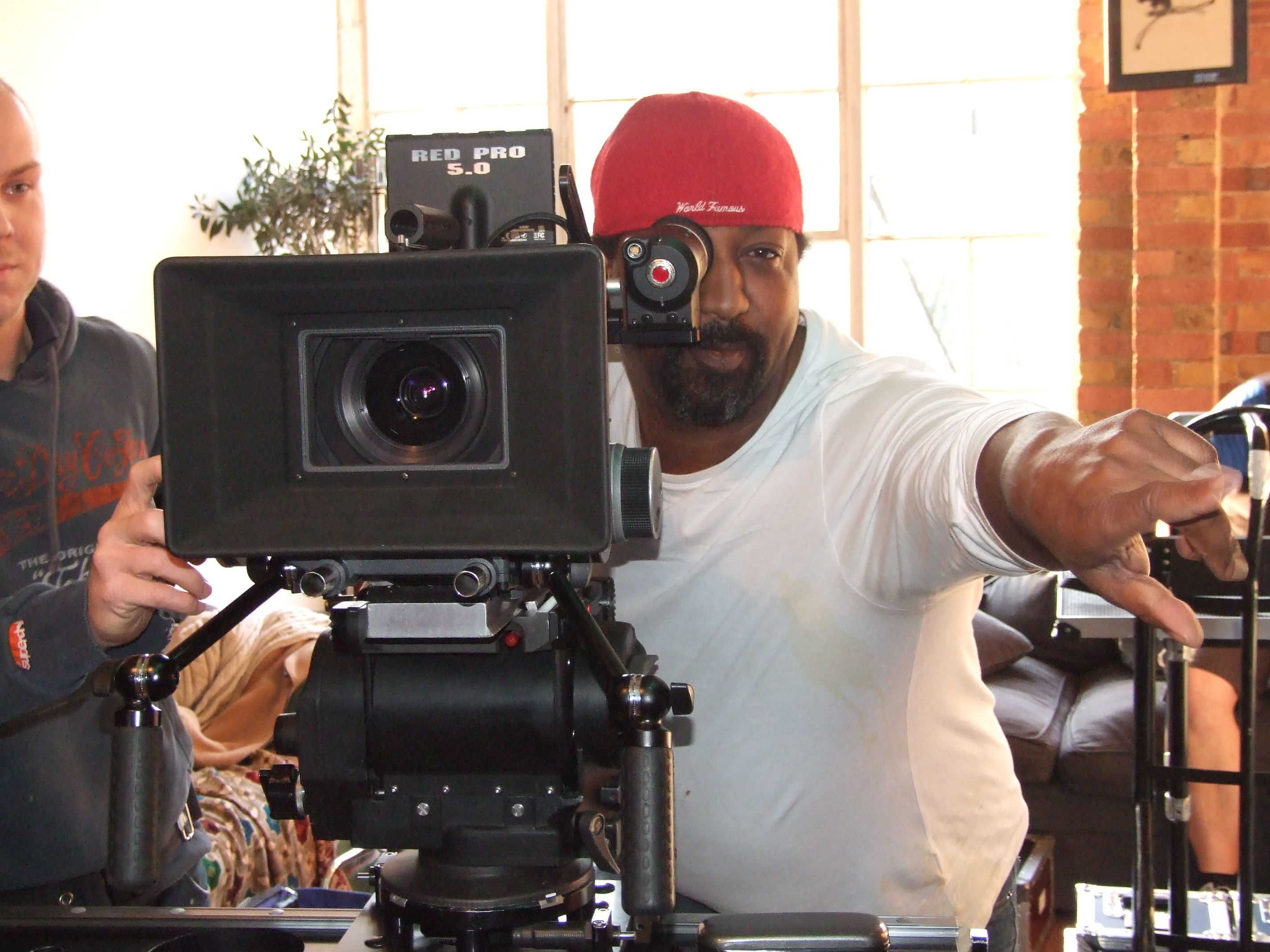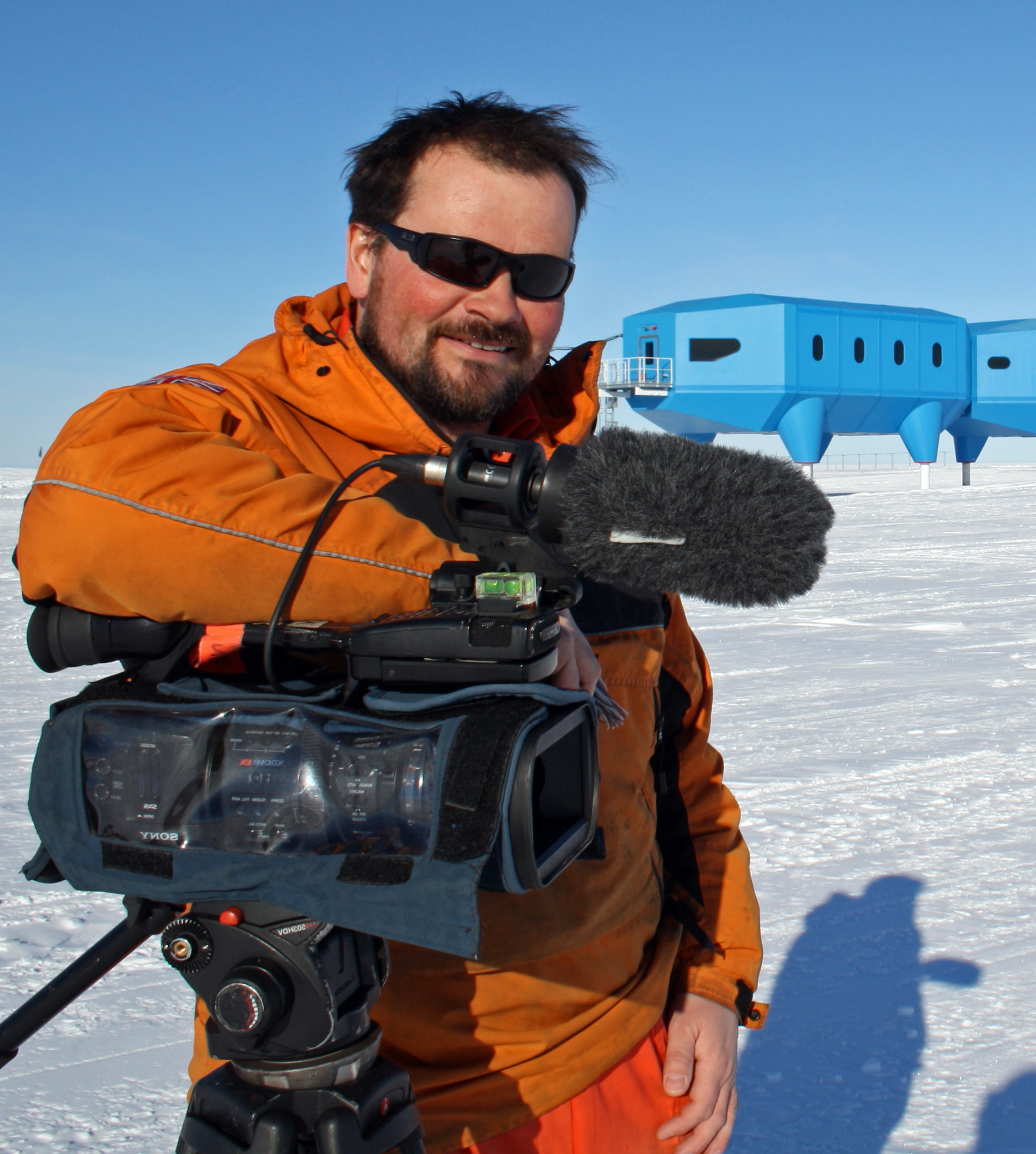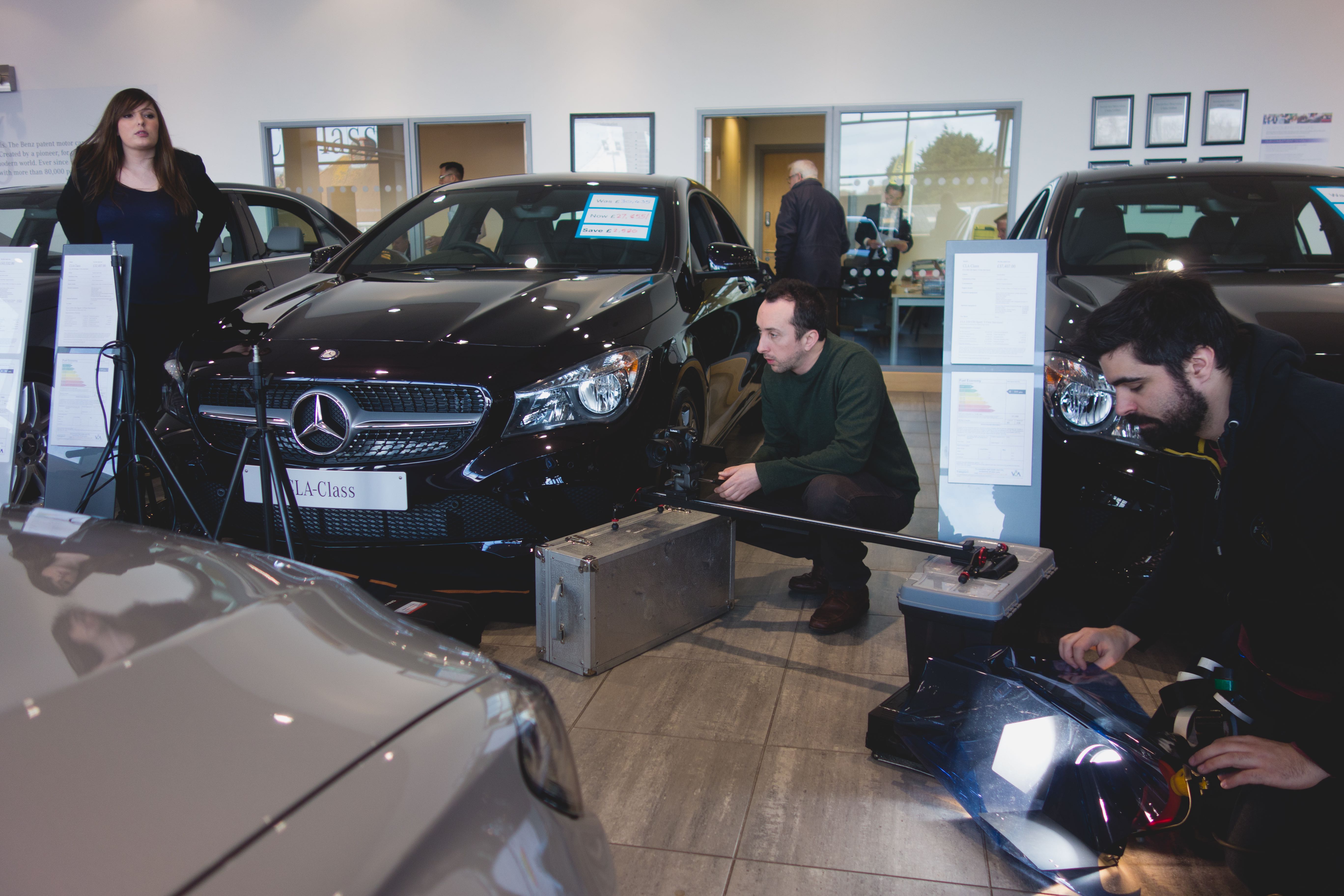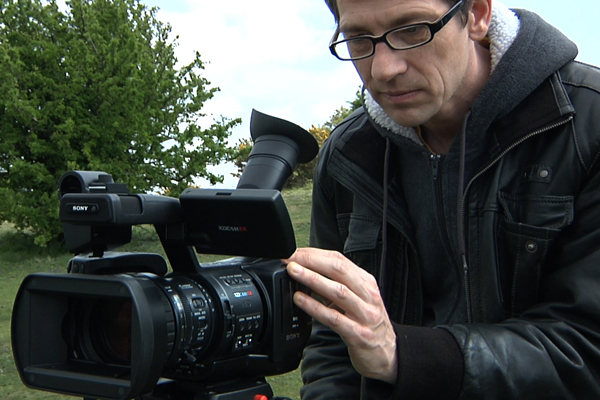ASK & DISCUSS
INDEXwhich is the cheapest possible broadcast quality hd camera
13 years ago - Emin Tayfun Arli
I will be making various short documentaries, I am looking for the cheapest possible camera, from which the footage needs to be good enough to be broadcast, just in case some TV producer decides to use it. I can imagine this question is asked before and answered but I have not been able to find any such suggestions. Thank you.
Only members can post or respond to topics. LOGIN
Not a member of SP? JOIN or FIND OUT MORE
12 years, 12 months ago - Alex Martin
Have a look at the latest copy of Iris magazine (www.theirismag.com) there is a review of the Sony camera and a write up of the Blackmagic camera by a guy using for doco work amongst other shoots.
12 years, 12 months ago - Owen A Smith
I think it depends on what you want to do with the camera and work you could buy a Sony EX3 but these cameras are or may already have been discontinued. As we progress with HD TV more and more companies are demanding more and more higher standards of camera to shoot programmes on. You need to consider European Broadcast legislation namely EBUR118 tear 2L I have added some you tube subjects at the bottom of this message for you to look up which will explain it to you in more detail. The most important thing to consider when buy any type of minmum broadcast level camera is that it must shot at a minimum 50mb per second 4:2:2 with a minimum of 3 2/1” sensors I have been a lighting camera man for a number of years and Director of Photography for a number of years and work with the RED Camera and Arri Alexa as well as Sony Broadcast Cameras.
So I do quite a bit of Broadcast TV work probably as much as I do film work . I am also a full member of the Guild of Television Cameramen and The Directors Guild of Great Britain. Firstly I would suggest that if you want to buy a camera buy one that will still be broadcast quality in four years time and not one that may be current. Most broadcasters want an HD camera that shoots at 50MB 4:2:2. and three 1/2 “ Sensors this really is a minimum The entry level camera I would suggest for documentary is the Soney PMW200 this is a basic entry level broadcast camera. Which meets EBUR118 tear 2L that will give you a number of years of use in terms of broadcast use. For an HD Broadcast camera.
I would always consider Sony Professional cameras as the are known to be a great broadcast camera manufacturer. However please consider what you want to shoot and the look that you want if you buy a basic camera you will get a basic look and as you progress with your camera work you will find yourself being extremely restricted in what the camera can do. However the PMW200 is a good camera at the level its set at and is a broadcast camera at entry level. However I would advise that you work towards getting a better camera that will last and earn you money.
A Good entry level camera to consider would be the Sony PMW 350MB Camera it has a 2/3" chip. and stores data to SxS cards and is a solid state camera you can upgrade it to store data to a hard drive with a conversion attached and this will allow you to record data at 50mb per second at 4:2:2. which is industry acceptable broadcast standards with the BBC. and EBUR118 tear 2L
However whatever camera you decide to buy you might want to consider the following: Can I attached and use different lenses or is it a fixed lens, do I want to use a set of prime lenses on the camera? and if filming off a set of sticks (Tripod) is the camera designed to be a shoulder mounted camera or a palm held camera the cheaper cameras are normally palm held camcorders such as the PMW200 in the basic form though you can buy shoulder rigs.
However the Sony PMW350MB "K" meaning that it comes with a detachable Lens " L" as in Sony PMW350L meaning camera body sold without a lens body only The Sony PMW 350K is a good quality entry level professional shoulder mounted camera that can be used for broadcast television provided you upgrade to allow you to shoot at 4:2:2. However do not be fooled by the Sister camera PMW320K as this camera may look pretty much identical however that is where it ends as in looks the PMW320 camera is a cheaper camera and only has a 1/2" chip which is the same chip as the Sony EX3.
The main difference between the EX3 and the PMW 320K is simply that one is a shoulder mount camera and the other a palm held camera. I would suggest that you consider what you are looking to shoot and what you want to soot with the camera after if you are planning to keep working as a camera man then consider a better camera then the cheapest entry level broadcast camera
I am unable to add web links but I suggest you go to you tube and type in the following subjects for consideration “Review of the Sony PMW-200 XDCAM 50 Mb/s 422 camcorder ”. This is paramount to watch the other video to watch which should help you to be informed in order that you can make your best choices based on budget and longer term considerations again go to you tube video and type in the following subject to watch and view more on the PMW350K “Sony PMW-350 from a DP's perspective but please remember EBUR118 tear 2L
Good luck and I hope this helps : ) remember the bottom line is the Sony PMW 200.
12 years, 12 months ago - Neil Richards
The Panasonic HPX-250 is fully BBC approved for HD broadcast and records 10bit 4:2:2 at 100Mbs. It's an excellent camera and at under £4k+vat is cheaper than most of the other options here.
12 years, 12 months ago - Kirk Watson
I was in a meeting the other day for a TV program and they said my Sony EX1 is out of date now and I need something with 50mbs, ex1 is 30 or 35mbs. Which is a bummer as it is a fantastic camera. I was looking at the PMW-200 which is around the 5-6000 mark. Not sure what would be cheaper than this as 50mbs seem to be new
12 years, 11 months ago - Emin Tayfun Arli
Thank you once again for all the information, ideas and advise, but Panasonic GH3 seems to be the best camera for what I am trying to do, I have been reading up on it and can't wait for it to come out... Thank you Tom...
12 years, 11 months ago - Sam Seal
Use a camera you like, and find a way to monetise your product through the web.
You'll get a zillion times more creative satisfaction doing it that way, and if what you make is compelling and worthy of broadcasting, the broadcasters will come to you, which is a much stronger and more satisfying position to find yourself in. Then you can get whatever camera they ask you for with the advance, or better yet, you can organise to use their facilities and avoid the endless treadmill of upgrading you'll be stepping onto by buying your own gear.
Otherwise, be ready to jump through a zillion hoops for an endless succession of salaried jobsworths who think it's their role to find problems with your product that only they are expert enough to detect.
12 years, 12 months ago - Kirk Watson
I was looking more into stuff for myself yesterday and the canon xf300 been on the market a bit longer and is a little cheaper than the PMW-200. XF300 records in 50mbs too. Another option maybe.
12 years, 12 months ago - ged cleugh
Further to Neil's suggestion, the Panasonic HPX250 is very versatile. The 100MB he mentions is AVC-Intra, a really good codec if you're going to be pushing the colours in a grade. Also, the lens is wider and longer than most of the suggestions above which is very useful for general purpose broadcast shooting. The downside is that the P2 cards are far more expensive than any other recording format, but they are more robust and worth the investment. You can get one for £3700.
12 years, 12 months ago - John Lubran
The Canon XF300 is hardly much cheaper than the PMW200 and although the BBC has listed it as acceptable it's just a tad short of that full EBU spec for HD Broadcast which demands a minimum of three 1/2" chips. The canon 300 (and 305) only have three 1/3" CMOS chips, so because of that the Canon will need to be a lot cheaper if it's to be a contender. An EX1 or EX3 with the out board recorder fully meets those specs because of their 1/2" CMOS chips
12 years, 11 months ago - John Lubran
John Baker put it well by noting that the full EBU spec is not absolutely set in stone, although deliver/transmission formats are. Clearly if one has a film of special merit of some sort then broadcasters can and do use films that have been shot on anything. I can confirm many instances where a programme has been delivered on the required formats over the years that where shot partially or totally on an officially inferior format/camera without them noticing or questioning the fact. For example, Hi8 as Beta SP, DV/DVCAM as Digi Beta and HDV as HDCAM, but in all those cases very great care by real experts were required. The original poster asks though for a camera that can truly meet EBU standards without the potential problems that risky ducking and diving tactics and potentially disaterpous short cuts can result in. Not long ago the differentials in cost and capability of broadcast cameras and sem-pro types were so great that ducking and diving was often the only available option but that's not the case today. When two or three thousand pounds for a semi-pro type is so close to the five thousand (with necessary cards and battery) cost of a PVW 200 or evben less for a used EX1 with a high bit rate recorder which really do meet EBU specs it seems silly to me to buy a white elephant? Don't forget that 50mbs is not the only bench mark to meet. 4.2.2 (4.2.0 at a pinch)and minimum of 1/2"chips/CMOS or single 35mm type are also required. These are minimum specs in an ever increasing standard.
12 years, 11 months ago - Tom Kelly
I know the form factor might be a problem but remember the Panasonic GH3 comes out soon and meet the 50Mbs at a fraction of the prices of rival cameras. Its missing XLRs but you can always buy a Beachtek to solve that.
12 years, 12 months ago - John Lubran
The PMW 200 seems to be the one right now as it meets the minimum requirement of 50mbs, 3 x 1/2" CMOS and 1920x1080. At about 4,500 ukp plus VAT it's cheap, but you still need to buy media cards and at least one additional big capacity battery. However a good used EX1 and EX3 can also meet those standards by adding a a not altogether too unergonomic out board recorder such as a Ninja or Nano Flash at an all in price that might be less. The EX3 has an interchangeable lens system which the PMW 200 doesn't have. I imagine Sony will shortly introduce an interchangeable lens version of the PMW 200. Also some outboard recorders provide very high rate options up to 200mbs with useful storage capacity.
12 years, 12 months ago - Martin Belderson
As ever, it all depends upon what you want to do and some of the posts highlight the danger of relying upon what people at production companies tell you. For example, under the new EBU guidelines, the EX1can still be used. It just depends upon what you want to use if for. What appears to be critical is compression. 4:2:0 is marginal. 4:2:2 is preferred.
Owen's advice is spot on but one additional thought occurs to me. Cameras and prices are changing so fast (for example, the massive RED price cuts) it is not a good time to be buying any kind of camera. Much cheaper to hire the kit for your shoots than invest in expensive kit that may soon become obsolete.
It might be a good idea to have a careful read of the EBU guidelines before you go any further:
http://tech.ebu.ch/camtest
http://tech.ebu.ch/docs/r/r118.pdf
And the BBC guidelines are as well:
http://www.bbc.co.uk/commissioning/tv/production/delivery/hd-production-delivery.shtml
12 years, 11 months ago - John Baker
A lot of the specs are simply designed to make their life in the office easier not because it makes any technical or aesthetic sense. Their attitude to codecs is a great example. 35mbps of one codec is not comparable to another.
The BBC restricts what they allow for instance mostly if they are fronting the money and just to make their back end job easier. Its what they know.
They still screen stuff shot in all sorts of ways when bought from someone else. TV companies don't say "We are not going to screen House" just because it was shot on DSLR/H264.
I have submitted footage and transcoded it to appear as if shot on a different camera and they never noticed! If it is badly shot they probably would notice.
Shoot something good with the best you can afford.









